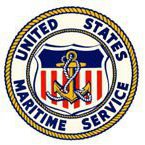-
Posts
2,248 -
Joined
-
Last visited
-
Days Won
11

Kiipu replied to Promo's topic in Auctions and Online Sales or Sellers

Kiipu replied to Bruce Pennington's topic in Translation Assistance

Kiipu replied to Bruce Pennington's topic in Translation Assistance

Kiipu replied to Bruce Pennington's topic in Translation Assistance

Kiipu replied to Bruce Pennington's topic in Translation Assistance

Kiipu replied to partyjam3's topic in Military Swords of Japan

Kiipu replied to partyjam3's topic in Military Swords of Japan

Kiipu replied to partyjam3's topic in Military Swords of Japan

Kiipu replied to george trotter's topic in Military Swords of Japan

Kiipu replied to Bruce Pennington's topic in Military Swords of Japan

Kiipu replied to Kiipu's topic in Tanegashima / Teppo / Hinawajū

Kiipu replied to Kiipu's topic in Military Swords of Japan

Kiipu replied to Kiipu's topic in Military Swords of Japan

Kiipu replied to Get Paid Pawn's topic in Military Swords of Japan

Kiipu replied to Get Paid Pawn's topic in Military Swords of Japan

Kiipu replied to Kiipu's topic in Tanegashima / Teppo / Hinawajū

Kiipu replied to Minseito1941's topic in Translation Assistance

